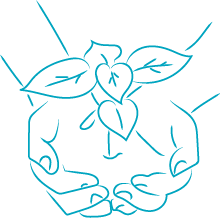
H2air was among the first to have an ecologist. The team has since been strengthened with 4 ecologists to support the life of the wind and solar farms. A specialist in wetlands, Stéphanie LUCCI presents her job.

H2air was among the first to have an ecologist. The team has since been strengthened with 4 ecologists to support the life of the wind and solar farms. A specialist in wetlands, Stéphanie LUCCI presents her job.
I am in charge of monitoring issues on fauna and flora for wind and solar projects. I support and advise the group's various departments on biodiversity issues. I help in the choice of design offices, exchange with them during the realization of the essential ecological study in the instruction of the projects, from the initial state to the analysis of the impacts of the projects until the definition “avoid, reduce, offset” measures. We choose the variant with the least impact among the different implementation variants. If necessary, we implement and monitor measures to avoid and reduce the impact. This means that we avoid installing parks in the event of strong stakes for wind and photovoltaic energy. Clamping to protect bats is a measure that can for example be put in place.
From prospecting for a wind project, even before going to meet the elected officials, we draw up an ecological pre-diagnosis based on the bibliography available on the site. It is a question of the project managers becoming aware of any prohibitive issues, such as regulatory zoning or the presence of populations of remarkable sensitive species. During the development, after having established specifications with the requirements of the administration, we follow its ecological studies, which include in particular the inventories on the ground. We review the ecological studies before submitting applications for environmental authorization or building permits. During the investigation, we must respond precisely to requests from State services or observations during public inquiries. During the project, we frequently call on a design office to monitor it and protect, if necessary, the species to be protected by adapting the schedule. We do not carry out heavy work such as earthworks, during sensitive phases such as the reproduction of avifauna. Once the parks are commissioned, an environmental expert carries out environmental monitoring. The measures identified in the ecological study must also be implemented and monitored.
Biodiversity is playing an increasingly important role in wind and solar energy. Thanks to its environmental department made up of several ecologists, H2air understands and takes biodiversity into account as much as possible in all projects. Following the growth of our activities, we support more and more solar projects! The stakes are really different between a wind farm and a solar power plant. If it is the flying fauna which is mainly sensitive to wind power, it is the insects and the flora which are to be monitored for photovoltaics. In the alarming global context of biodiversity loss, the State's training services and H2air are stepping up their demands. In the future, we will be more in demand for studies and pre-diagnostics for the group's renewable projects abroad. Biodiversity will be different, as well as the expectations of each State. Our team is testing new technologies to further reduce the impact on biodiversity. Recently, we used a biomimetic drone to test raptor detection and scaring systems. These promising technological developments contribute to better protection of biodiversity. This is the whole meaning of my mission!